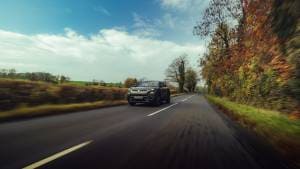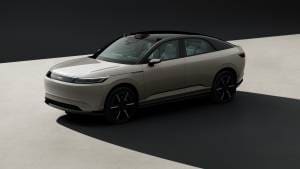Maruti Suzuki S-Cross first drive review
Maruti Suzuki have nursed a burning ambition to dominate a slightly more premium segment than the one they presently reign in. They tried it with the SX4 and the significantly more premium Kizashi and Grand Vitara but Indian customers just couldn't accept a Maruti with those conditions (read 'premium' price tag). The environment has changed now and things are looking positive for every volume manufacturer wanting to go the premium way. So Maruti are making a second attempt at wooing this particular section of buyers but the plan is better structured this time around.
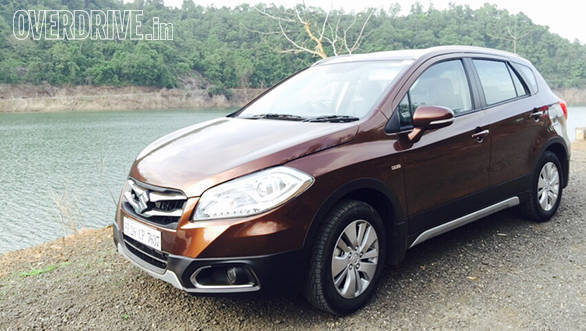
The plan in question involves the S-Cross, a crossover projected to be a bit more premium than the Ciaz. A clever strategy is to position the whole retail experience of the S-Cross in a new avatar under a brand name Nexa. These are basically a new set of showrooms where only products such as the S-Cross will retail in order to build a gap between Maruti's current portfolio and the likes of the S-Cross.
There is a lot of attention being spared on crossovers and SUVs and this ideally puts the Maruti Suzuki S-Cross in a good place. But being premium is not just about having a high sticker price or fancy equipment. It's also about how a vehicle rides and drives. Here is how the S-Cross feels on every count.
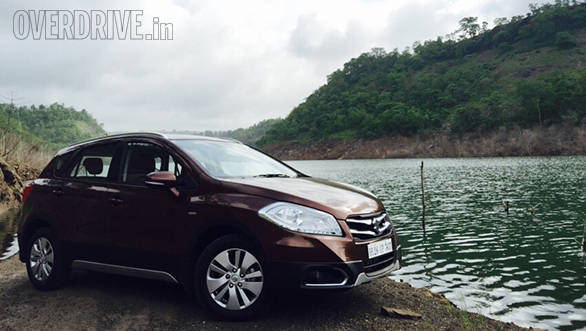
While the Ciaz replaced the SX4 sedan, the S-Cross in a way brings back the SX4 in the form of this hatchback-based crossover. Apart from the mock scuff plates and the all round cladding, the design is more hatchback than SUV. In fact, it is Maruti's challenger to the Hyundai Creta, Renault Duster and Nissan Terrano but principally aims at luring the EcoSport buyer. Look at it and you'll mistake it to be one of the cross themed hatchbacks that are on sale today. However in the flesh, it's a much larger footprint. The front end looks like an evolved version of the SX4 and the headlamps take priority. The lamps feature projector lighting and LED daylight running lamps too. They're large units and are quite striking to look at. The grille is split by a body coloured section that holds the number plate too. For India, there's a new twin-chrome slat grille. We still like the tri-slat metallic grey grille and the single chrome slat that is available internationally better. The lower half of the bumper gets black cladding that houses the fog lamps and a contrasting mock bash plate-like insert. The fog lamps gets a chrome surround but there's thankfully less bling compared to the S-Cross that was displayed last year at the Auto Expo.
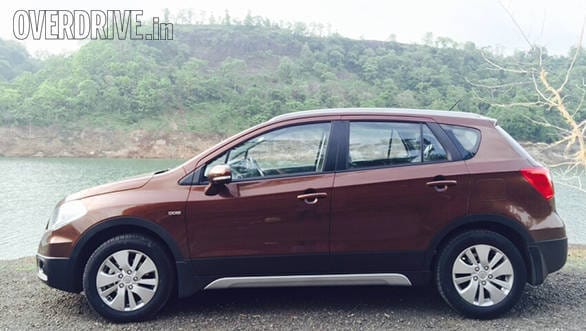
The side isn't the most appealing view of the car but it still is a smart design. The low nose and the long front overhang add to the leaping stance. The shoulder line is angular too and flows like a wave and straightens after the mirror. There are four different glass sections thanks to the quarter windows at the front and rear. Roof rails are incorporated but aren't functional and aren't tall enough to stand out. Side cladding is similar as seen on the front end and there's contrasting mock protection too. 16-inch alloy wheels (in top variants) feature multiple spokes and end up almost covering the entire section, looking more hub cap like in the process. Surprisingly, ground clearance doesn't seem to be significantly increased for India and is in fact the least in the segment (180mm). The old SX4 sedan in fact offered 10mm more. However, it isn't a problem and most speed breakers and potholes were cleared without complaint.

The rear end has a lot more happening. The angular tail lamps (no LEDs here) are attractive and are a split type unit like in the EcoSport, a thick number plate garnish and an almost fully black rear bumper give it the soft roader look. The bumper also houses a you guessed it, silver colour insert. At times, the rear does look MPV-ish. The rear window doesn't end at the edge but wraps around the boot. Overall, the S-Cross is a smart car but as we said before, unlike its competition, it's more hatchback than SUV.

Step inside and the cabin is a nice place to be in. The all-black interior is fresh and stylish while the design approach is very European. There is a sense of familiarity thanks to the steering and a few shared parts, there are a few extra controls too like cruise control switch. The buttons for the fog lamp, parking sensor and dummy switches are placed under the right driver side air vent. These buttons look dated and out of place and have been around since the first Swift that was sold in India a decade ago. The blue backlit instrument cluster is simple and easy on the eye - it shows very little data though - instantaneous fuel efficiency, average fuel efficiency and range are some of the details that are displayed.
The layered dashboard features a large centre section finished in a soft touch pattern skin. The centre console is shaped like a hexagon but looks good, it also houses the touchscreen AVN borrowed from the Ciaz. A brushed aluminum insert surrounds it as well. The same colour and texture are also used in various other parts of the interior like the steering wheel, gear lever housing and arm rests in the door. It makes the cabin look a lot sportier but quality could have been better. Fit and finish aren't the best while plastic quality in some areas is ordinary. Maruti is not offering faux wood and dual-tone black/beige interior options.
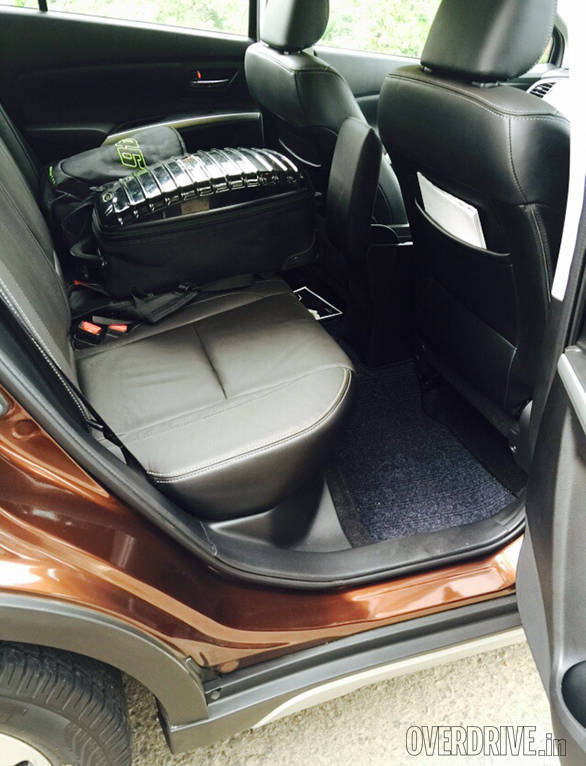
There's a lot of space on offer, not more than competition but on par with a few of the rivals. Headroom and shoulder room are impressive but the middle passenger will find it uncomfortable since the floorboard isn't completely flat (the S-Cross features AWD internationally and hence, the high transmission tunnel). The large glass area adds to the airy feel though. A rear armrest and adjustable rear headrests are offered as standard. There are a few storage points under the centre console and front armrest. There are two cup-holders behind the gear lever too.The boot, however, isn't the best in class, it's only about the same capacity as the new Honda Jazz (353 litres) and should have been deeper. The seats split or completely fold for added convenience. Maximum cargo space is a decent 810 litres. Both the front and rear seats offer good comfort. The rear seats could do with more support though.

The S-Cross for now will not be offered with a petrol motor but instead with two diesel options. The proven 1.3-litre, DDiS engine from the Ciaz and Ertiga has been used. The second option is the 1.6-litre DDiS powertrain. Maruti may not have offered it in the Ciaz but the engine makes its debut in India with the S-Cross. The 1.3- and 1.6-litre engines have been badged DDiS 200 and DDiS 320 based on the torque rating. While the 1.3 is mated to a 5-speed manual and produces 90PS, the 1.6 makes 120PS and is offered with a 6-speed unit (see our spec comparison for more details). There is no automatic transmission variant on offer. Only the Hyundai Creta for now features an automatic diesel in this class. While we didn't drive the 1.3-litre variant, we expect it to be similar in tune to the Ciaz and should still offer good fuel efficiency - Maruti claims 23.65kmpl for the 1.3-litre unit and 22.7kmpl for the 1.6-litre mill.

We did drive the all-new 1.6 and were quite impressed with the much-awaited engine. It's a Fiat sourced motor too and is imported, not locally produced. This engine is mated to a 6-speed manual transmission that offers smooth and precise gearshifts. The engine character is very similar to the 1.3-diesel but it's a lot more refined and the increased torque is very obvious. On the road, engine noise is quite audible at idle but as speeds rise up, the note becomes calmer. There is turbo lag and it is more evident at higher gears at slower speeds. It too features a VGT but the surge after 2,000rpm is quite strong and should have been linear instead. The trick is to shift in time and try to keep it as much as you can in the narrow powerband, but this means one does shift often. If you are the type who don't like shifting gears too often, then the only option is to wait for the turbo to kick in. On an open highway, however, where one doesn't need to shift gears often due to traffic, cruising at triple digit speeds is effortless. In sixth gear, the S-Cross 1.6 cruises at 120kmph with the tacho needle only hovering slightly above 2,000rpm. It is a capable touring machine. The DDiS 320 is a very impressive motor and we want to see it in the Ciaz too. Braking duties for the 1.6-litre diesel model are handled by ventillated discs upfront and solid discs at the rear.
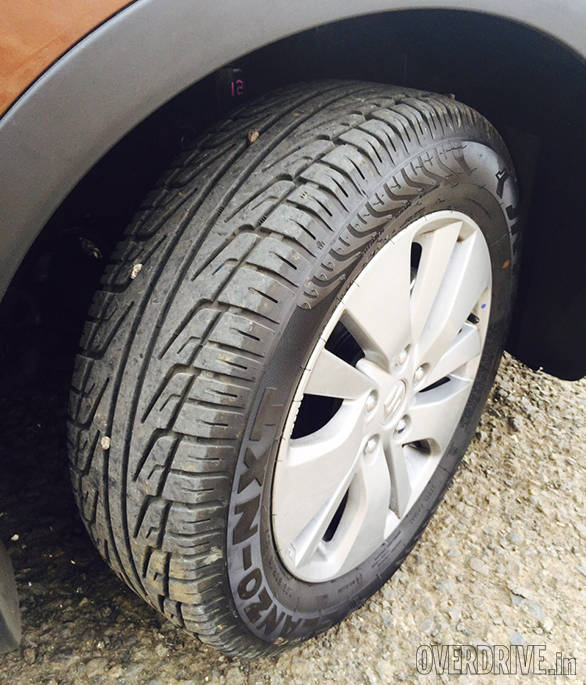
While the S-Cross is offered with an optional AWD system internationally, it doesn't make it to India. Power is sent to the front wheels instead and the chassis feels well balanced. But then the steering isn't as direct and could do with more feedback. There is slight body roll too. It still is fun to drive and an involving experience despite the lack of independent rear suspension (it instead gets a regular torsion-beam unit). The JK Tyre Elanzo-NXT rubber is more of an on and off-road tyre. The contact section is more square than circular while the tyre blocks and grooves are quite large and deep. The profile is higher than normal too. On a gravel road, the tyre may be of good use. However on the curvy and smooth tarmac (where majority of S-Cross drivers will mostly drive), grip isn't impressive and it squeals easily. Ride quality is quite impressive though. We drove over a series of speed breakers, rumblers and a few broken surfaces and the car glided through.
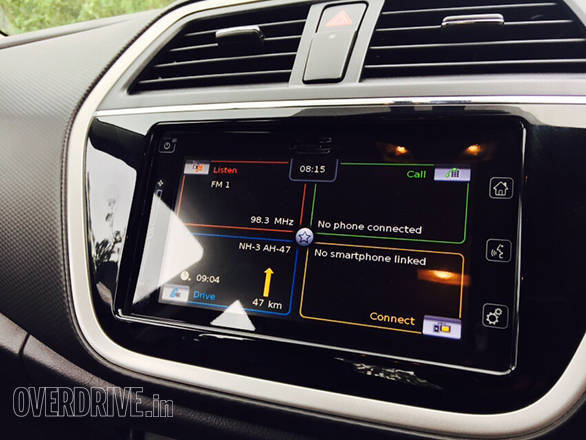
Unlike the other Marutis that are on sale today, the variants now get different names. There are five trim levels to choose from Sigma, Sigma(O), Delta, Zeta and Alpha. All variants get airbags. In fact, except for the base Sigma that only gets a single airbag, all trims get ABS. In terms of comfort features, the top variant gets a touchscreen AVN, keyless entry and ignition, auto day/night mirrors, auto headlamps/mirrors/wipers/climate control and cruise control to name a few.
Maruti Suzuki are aiming at a more premium spectrum with the S-Cross. If you ask us, there is no reason for the crossover to be priced above the Ciaz. The latter offers similar features, the same motor (DDiS1.3) and feels similarly built. There is no AWD option too and this alone will should bring the overall price down. Considering this, we hope to see the crossover priced anywhere between Rs 8.5 lakh and 11 lakh, ex-showroom, for the five different variants. Anything more and it will be hard to justify the premium.
Images by Halley Prabhakar
Also read:
Suzuki S-Cross: Comparing the UK-spec and India-spec models
Spec comparo: Maruti Suzuki S-Cross vs Ford EcoSport vs Renault Duster vs Hyundai Creta
Image gallery: Maruti Suzuki S-Cross
Unveiled: Maruti Suzuki S-Cross crossover in India
India-bound Suzuki S-Cross diesel gets a twin clutch automatic gearbox
Starts Rs 8.39 Lakhs
1462cc
Automatic
105
138
18.55 Kmpl
Starts Rs 7.99 Lakhs
1498cc
Manual
100
215
21.7 Kmpl
Starts Rs 5.89 Lakhs
1199cc
Automatic
90
110
17.1 Kmpl
Starts Rs 9.99 Lakhs
1353cc
Automatic
115
242
-NA-
Starts Rs 9.99 Lakhs
1461cc
Automatic
104
245
19.61 Kmpl
Starts Rs 8.49 Lakhs
1330cc
CVT
156
154
-NA-


